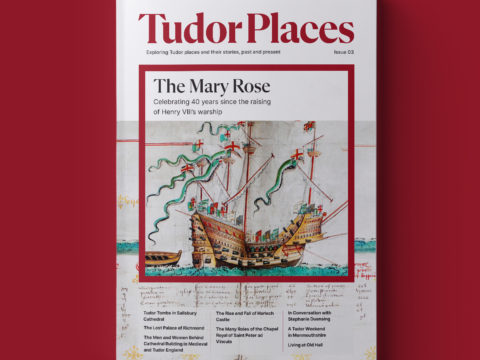Regent Moray: Life Story
Chapter 12 : The Queen's Marriage
Moray had two goals – the promotion of Protestantism, best served by alliance with England, and his own power. For Mary, the preservation of good relations with England had been one of her guiding policies in the first years of her rule and her attempts to promote harmony between the two countries seem to have been genuine, although she still refused to ratify the Treaty of Edinburgh.
Mary’s position was that she would ratify the Treaty, which proclaimed Elizabeth as the legitimate Queen of England (a point disputed by the Catholic powers of Europe in theory, if not in practice) if she herself were named as Elizabeth’s heir. For practical purposes, Mary had completely accepted Elizabeth’s position, wrote to her as Queen, and expressed herself in very respectful terms, almost as a younger sister, to her elder cousin. Mary was nine years younger than her cousin, and could hope to succeed to the wealthier, southern kingdom if her position were recognised. More practically, the Scottish Crown was poverty stricken, and could not afford any more wars with its neighbour.
Moray was deeply attached to the English alliance – it had afforded the means to implement the Reformation Parliament and remove the French troops, and it gave the Protestants a buttress in the shape of English cash and English arms, if Mary showed any signs of reneging on her promises to preserve the Reformation settlement. He pleaded with Elizabeth by personal letters, and also through Cecil to confirm Mary’s position, but to no avail. He also vigorously promoted the plan for the two Queens to meet. Mary was extremely eager for such a conference, but, although it was promised repeatedly, there was always some reason why Elizabeth could not confirm a definite date.As time went on, Mary became less and less trusting of Elizabeth’s motives and words, and so it became more difficult to Moray to sustain the alliance.
Elizabeth was also making life difficult for Mary in relation to the latter’s marriage. The Scottish Queen was told that, if she made a marriage that Elizabeth approved of, and refrained from any alliance the English did not like, she would be named as successor. Mary, who by 1563 had been a widow for three years and was eager to remarry to establish her own succession, was prepared to go along with this, but, although Elizabeth would tell her whom she could not marry, she refused to suggest a suitable candidate. Elizabeth veto’d Don Carlos, son of Philip II of Spain, and also the Archduke Charles of Austria. Eventually, having wasted (in Mary’s view) another year, the English Queen, via Ambassador Randolph, suggested Lord Robert Dudley.
This was a bombshell, and a highly insulting one at that. Dudley was the son and grandson of men executed as traitors, the widower of a woman he was rumoured to have murdered, and such an intimate of Elizabeth herself as to be widely believed to be her lover. Mary was completely astonished and told Randolph she needed time to think it over. During the rest of 1564, Mary continued to secretly pursue a possible Spanish match, whilst Moray and Maitland revolved the advantages of a marriage to Dudley,
In November 1564, Moray, flanked by Maitland, met with the English commissioners at Berwick to discuss the details of a marriage to Dudley (now promoted to the Earldom of Leicester to make him more palatable). They would be willing to encourage Mary to accept Leicester in return for a promise of the succession, but the English would not make a definite agreement. Moray told Cecil plainly that if the succession point were not clearly agreed, there could be no benefit for Mary in marrying Leicester, and she would turn her attention elsewhere.
In fact, there was already another contender.The Earl of Lennox, who had been exiled in England for twenty years, but returned to Scotland in late 1563 with Elizabeth’s permission, had a son, Henry, Lord Darnley.Lord Darnley was a year or two younger than Mary – intelligent, well-educated and good looking. As well as having the disputed Lennox claim to be heir to the Scottish Crown, Darnley was also the next heir, after Mary herself, to the English Crown (according to strict primogeniture, although the waters had been muddied by Henry VIII’s will, which excluded both Mary, and Darnley’s mother, Lady Margaret Douglas).He had also been brought up Catholic, pleasing to Mary, but did not show any special enthusiasm for his religion, and might be willing to convert to Protestantism, pleasing to the Protestant lords.
On his first appearance at the Scottish court, the young man seemed full of charm, and eagerness to please.He went to hear Knox preach, dined with Mary, Moray and Randolph and even danced galliards with the Queen at Moray’s suggestion. Whilst the Queen at first seemed only to be considering Darnley for his claims to the English succession, after she nursed the young man through an attack of measles in April 1565, she fell so far in love (or lust) with him that she made up her mind to marry him.
Lord James Stewart
Family Tree






